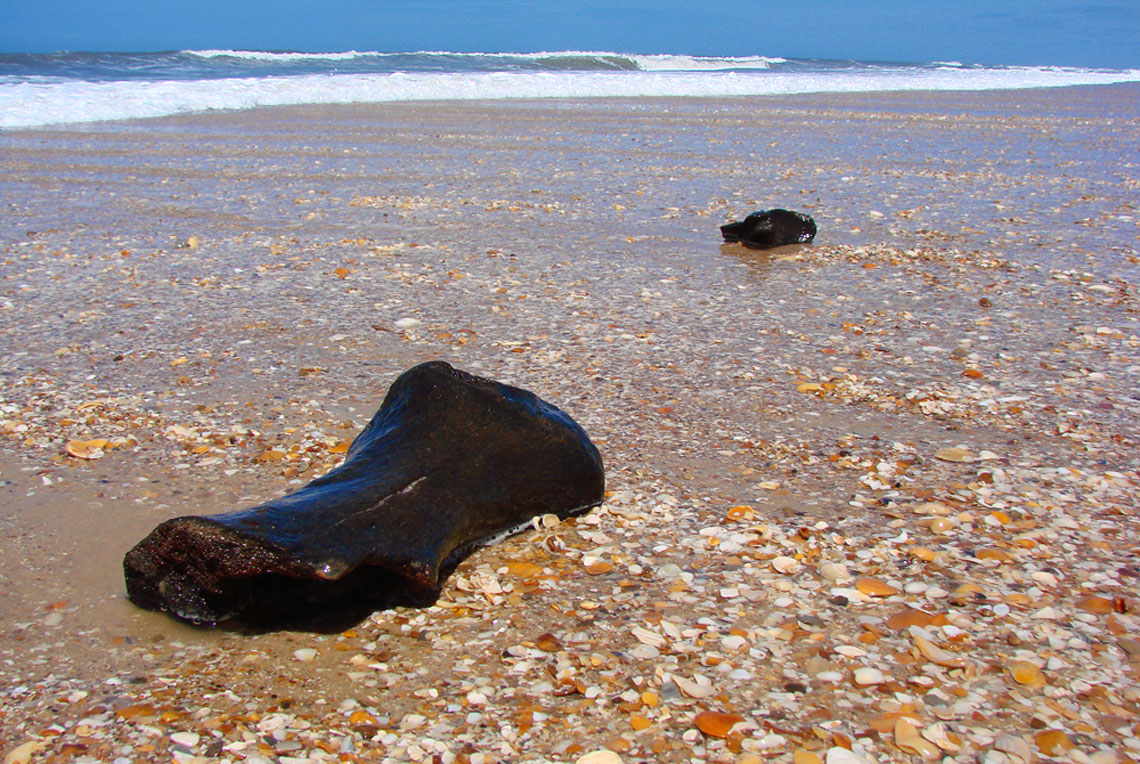On a normal day in 2007, when parking close to Concheiros beach, on the coast of Rio Grande do Sul, paleoceanographer Francisco Buchmann noticed something among the shells. The researcher had the mission of collecting fossil material in the region. Without leaving his car, he took a photo of what to any other person could appear to be a large stone on the beach. Not for him, who recognized it as a fossil. On taking it for analysis in the laboratory, he discovered that it was a preserved part of a giant sloth — more specifically a tibia (one of the leg bones) of a Lestodon.
Animals like these were part of the so-called megafauna: giant animals that lived during the Pleistocene, which was characterized by a succession of glacial periods (or Ice Ages) and interglacial periods, and extended from around 2.5 million years ago to 11,000 years ago. During this time, the majority of the giant species had become extinct in America, with just a few remaining in Africa and Asia. “The sea scours these fossils under the water and throws them onto the beach; I pass by in my car and collect them,” says Buchmann, who has been visiting the Rio Grande do Sul coastline frequently for 30 years, since graduating at the Federal University of Rio Grande (FURG). The researcher remained in this field of study, in which land and marine fossils are more easily found, when he became a teacher at São Paulo State University (UNESP), São Vicente campus, in Baixada Santista. “There are no rocks along the Rio Grande do Sul coastline, so anything you trip over you can bet that it is a fossil.”
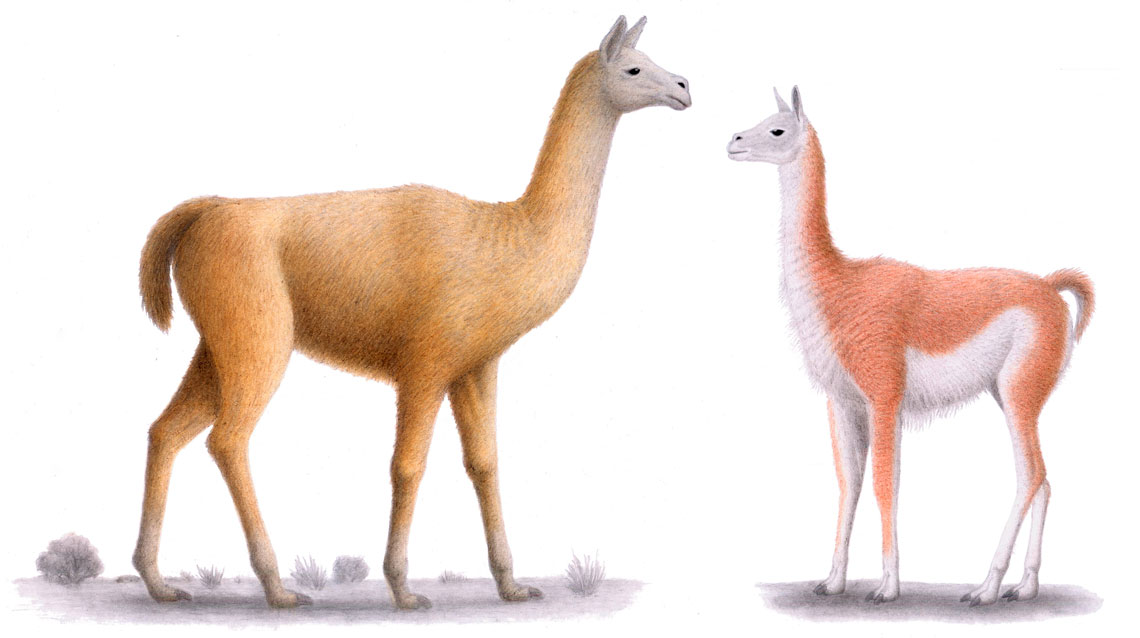
Renato Lopes / UFRGSIllustration of Hemiauchenia paradoxa and Lama guanicoe, camelids that in the past inhabited the region which is now the PampasRenato Lopes / UFRGS
It is with these fossils that Buchmann and other researchers have tried to unravel what the Pampas, the predominant biome in Rio Grande do Sul, were like during the Pleistocene. For this, they use techniques that have advanced over the last decades. In a recent study, a team lead by geographer Renato Pereira Lopes, of the Federal University of Rio Grande do Sul (UFRGS), managed to reconstruct the environment and climate of the region by analyzing the dental material of fossils from two species of camelids: Lama guanicoe, known as guanaco, which still exists in arid regions in South America, from Patagonia to Peru, and Hemiauchenia paradoxa, which is already extinct. The technique consists of calculating the ratio between two different forms (isotopes) of an element — in this case, the light and heavy stable forms of carbon or oxygen were analyzed — present in a fossil sample. The result of these calculations is called the isotopic ratio.
In total, Lopes and his team analyzed five dental fragments and made some discoveries about the diet of the herbivores. In the region of the Pampas, the vegetation presents plants with three types of photosynthesis classified as C3, C4, and CAM — the last is typical of succulent plants, such as cacti and some bushes that they could have also eaten. “An herbivorous mammal that feeds on vegetation ends up incorporating this carbon into its organic tissue,” explains Lopes. “When we analyzed the teeth, it is possible to identify from the isotopic ratios of carbon, whether they ate more C3 plants, more C4 plants, or a mixture of the two,” he adds. This is because the process of C3 photosynthesis leads to the absorption of a greater proportion of lighter carbon isotopes compared to C4. Until now, the team has not found animals in the region that fed exclusively on C4 plants, characteristic of hot climates. Among the camelids, there was a preference for the C3 type, which includes grasses and bushes of colder climates.
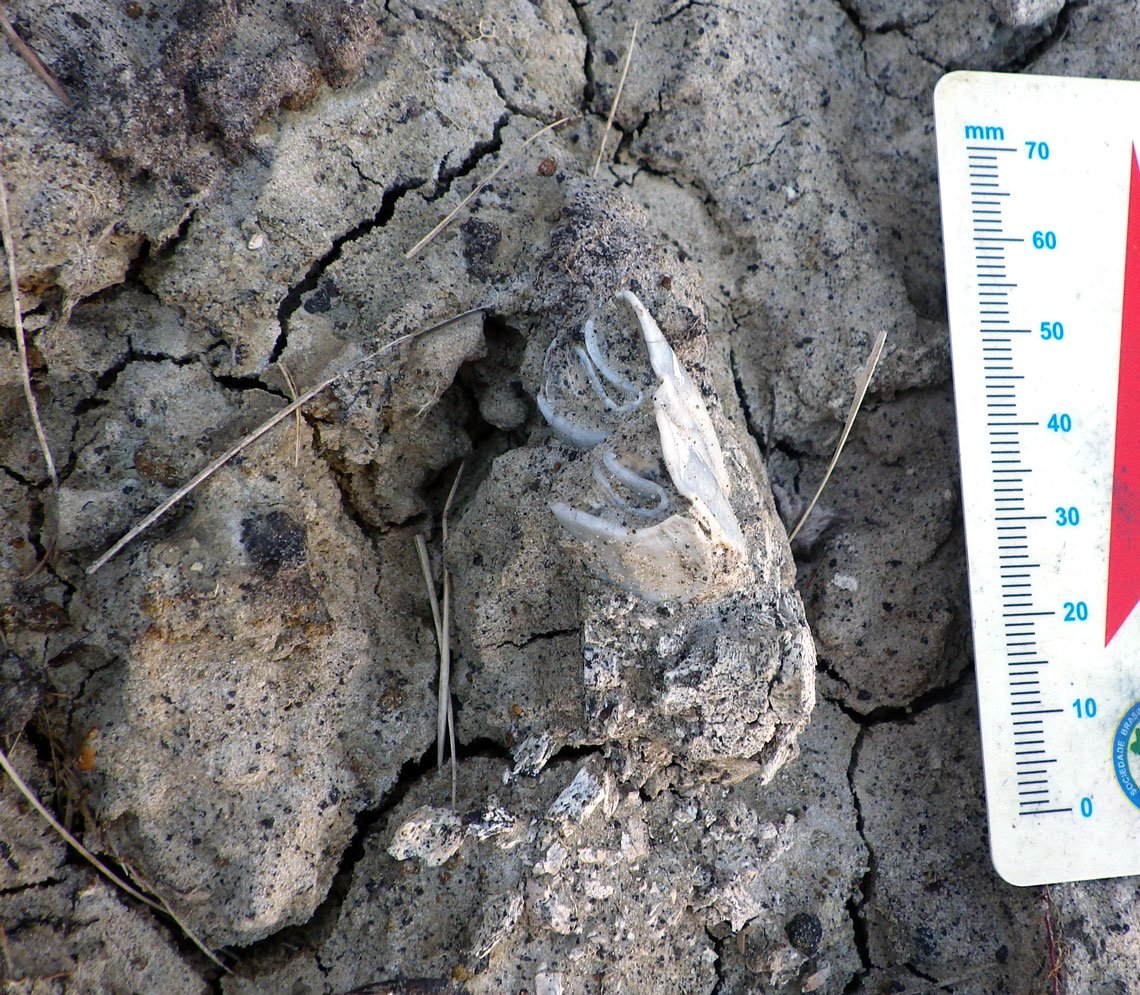
Renato Lopes / UFRGSChemical analyses in fossilized teeth of Hemiauchenia can reveal aspects of their diet and, consequently, inform about the flora of the environment in which this extinct animal livedRenato Lopes / UFRGS
Another element that the team identified in the fossils was oxygen. Despite being a more difficult indicator to interpret, Lopes affirms that the exams were successful due to the specific characteristics of the camelids, which live in a dry climate and ingest little water, especially as part of the vegetation they eat. “In a desert environment, the plants are subject to a lot of evaporation,” explains the researcher. As water with a lighter isotope evaporates more easily, what remains to be ingested is characterized by the heavier isotope. “The oxygen stored in fossils is mainly acquired through feeding, that is, from vegetation that the animals consumed,” says Lopes. Higher isotopic ratios, therefore, indicate a dry climate.
These discoveries about the diet of herbivores and the information about carbon and oxygen in the fossils enabled the researchers to infer what the climate was like in the region during the Pleistocene, in addition to the vegetation. “At the time these camelids lived, around 26,000 years ago, the environment was much drier,” points out Lopes. “It was the coldest and driest period of the entire last glacial period,” observes the researcher about what is known as the Last Glacial Maximum.
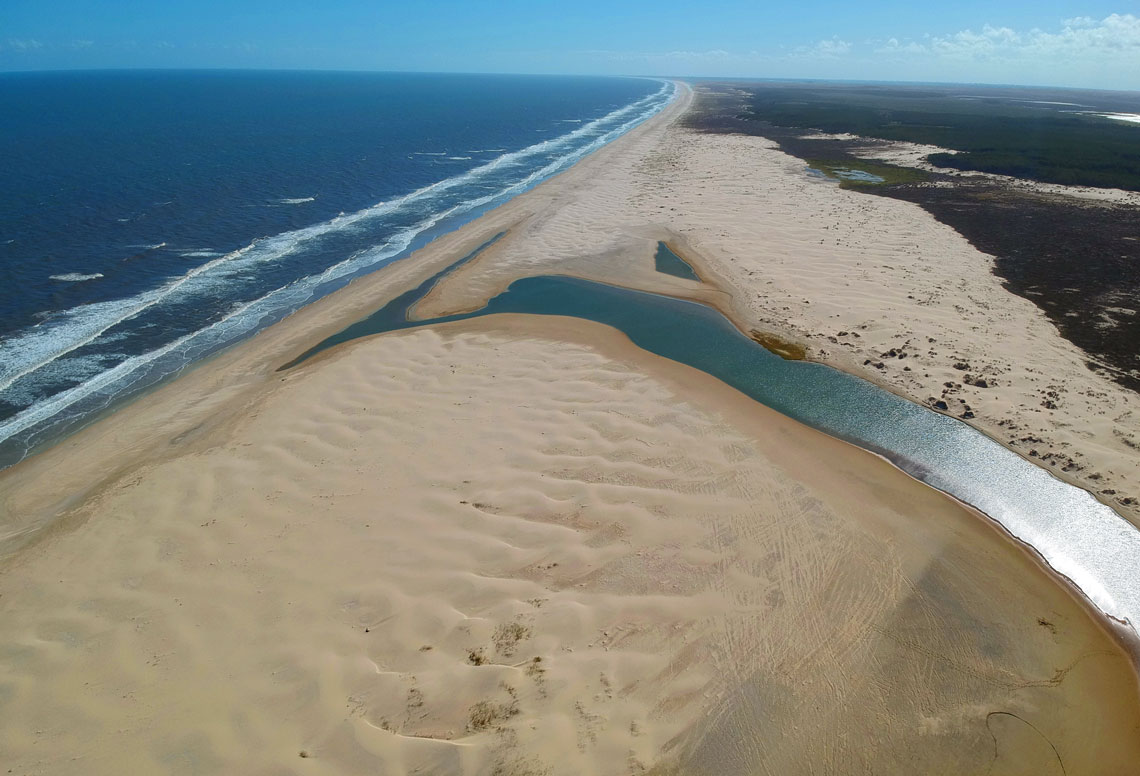
Francisco Buchmann / UnespBanks of the Estreito lagoon in São José do Norte, Rio Grande do Sul, seen from a droneFrancisco Buchmann / Unesp
Under the guidance of Buchmann, biologist Thayara Carrasco conducted an investigation similar to that of Lopes’s team, including another species, the vicuna (Vicugna vicugna), considered the smallest of the camelids that still inhabits South America. “The advantage of studying camelids is that they still exist in some regions of Latin America where the climate is cold,” says the researcher. They include the llamas and alpacas. The results of Carrasco’s study about the diet of the animals and the climate of the Pleistocene in the region were similar to those found by Lopes.
Camelid fossils have also been found further north in Brazil. “Today, Ceará is hot, but in the Pleistocene the climate was different and camelids roamed there,” says Buchmann. “The Pampas are a reflection of Argentina and Uruguay, there is just a small part in Brazil,” he explains. Pampean fauna is characteristic of Uruguay and Argentina, where the climate is colder, and the Brazilian fauna [characteristic of Brazil, of a warmer climate] migrates in accordance with climate changes: if we are in a colder, glacial period, the fauna from the south moves up north; in interglacial periods the Brazilian fauna moves down.”
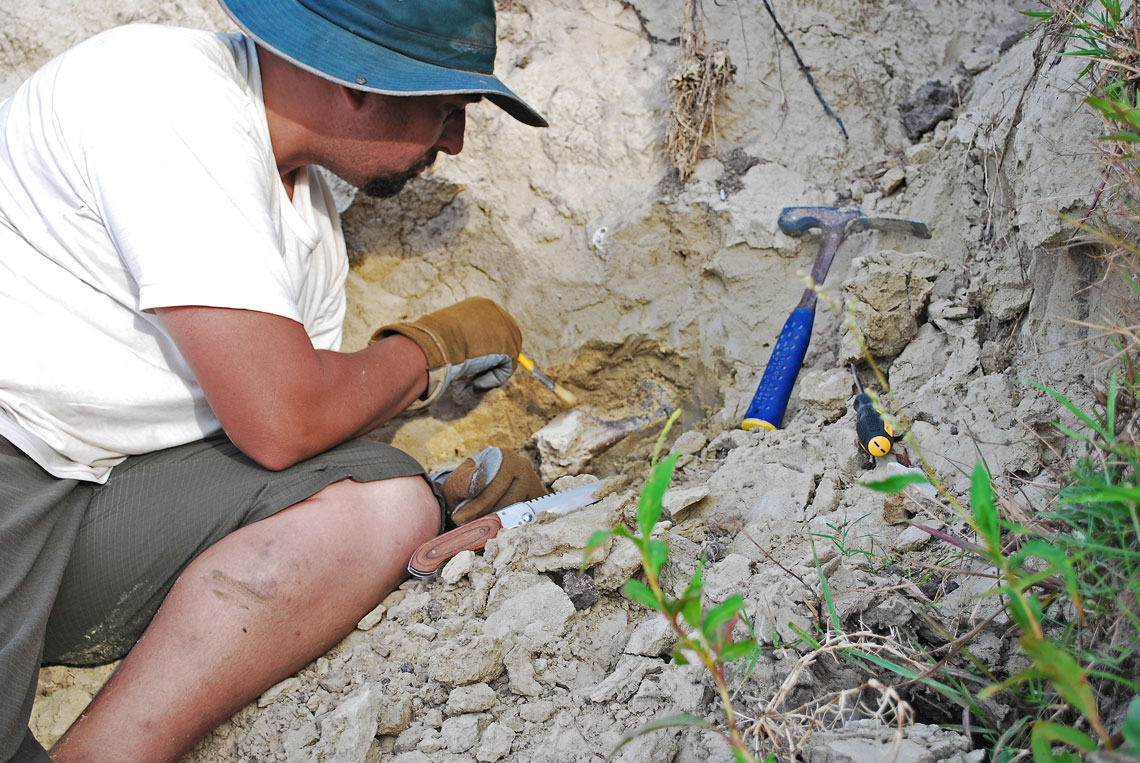
Renato Lopes / UFRGSRenato Pereira Lopes excavates an arm bone of a toxodon near the Chuí stream, in Rio Grande do SulRenato Lopes / UFRGS
As a result of these climate driven migratory movements over thousands of years, fossils of giant sloths and other megafauna animals, such as armadillos and saber-tooth tigers, are not found exclusively in Rio Grande do Sul. “This fauna lived from north to south of the Americas,” says paleontologist Mário Dantas, of the Federal University of Bahia (UFBA). Dantas’s team is working on an analysis of the annual diet of giant sloths. Splitting a dental fossil into parts that would represent a year of the animal’s life, it is possible to carry out analyses of more specific isotopes than for a more general sample of dental enamel, as was done in other studies. Therefore, the researchers expect to discover more details about the climatic variations throughout a year of the Pleistocene.
Studies of isotope analyses in fossils such as those done by Dantas, Lopes, Carrasco, and Buchmann seek to unravel the reasons that led some species to extinction. “We work with pieces of a jigsaw puzzle and each result is a new piece that science pieces together to create a more complete vision of what happened,” reflects Dantas. The results can also provide answers about how climate change acted and, possibly, will act. “The fossils are archives of environmental conditions,” says Lopes. “It is as if they were flashes of moments from history,” completes Carrasco. “It is difficult to measure impacts on the time scale of human existence, so they give us a larger window of time and, therefore, we are able to tell a more detailed story of the past,” he concludes.
Scientific articles
LOPES, R. P. et al. Paleoenvironmental changes in the Brazilian Pampa based on carbon and oxygen stable isotope analysis of Pleistocene camelid tooth enamel. Journal of Quaternary Science. Online. jan. 29, 2023.
CARRASCO, T. S. et al. Paleodiet of Lamini camelids (Mammalia: Artiodactyla) from the Pleistocene of southern Brazil: Insights from stable isotope analysis (δ13C, δ18O). Journal of Quaternary Science. Online. april 12, 2022.
DANTAS, M. A. T. et al. Inferring the Paleoecology of the Late Pleistocene Giant Ground Sloths from the Brazilian intertropical region through relative muzzle width and occlusal surface area. Journal of South American Earth Sciences. Online. june 23, 2022.
